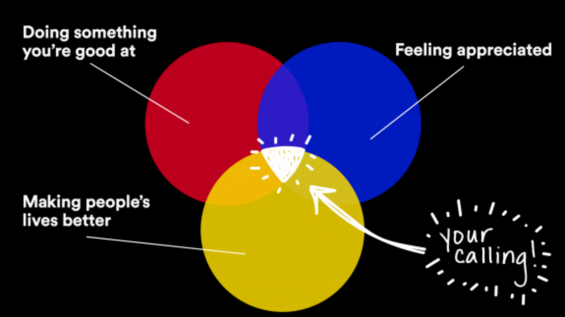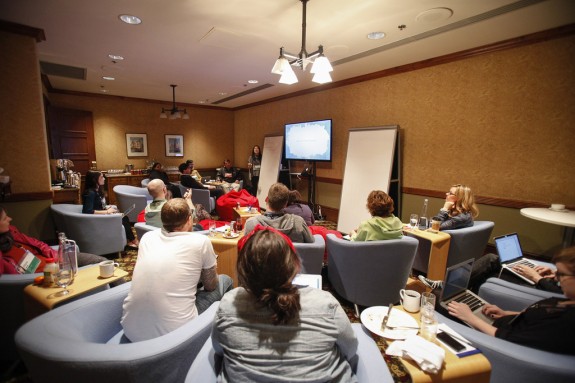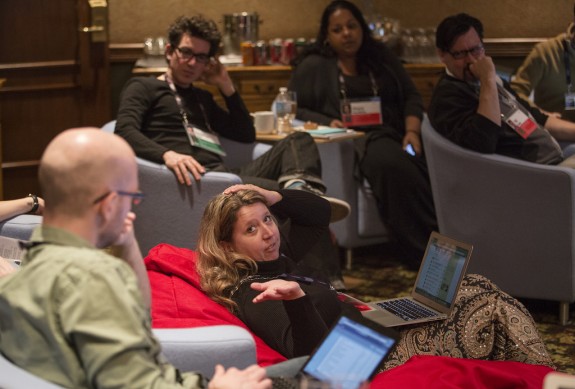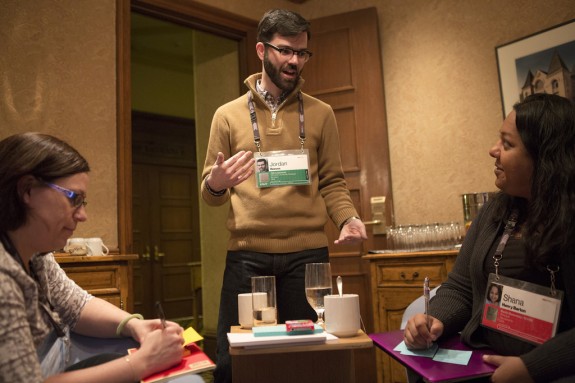
Why engage students? Because they can move mountains

Photo credit: Stacie McChesney
TED-Ed was thrilled to sit down with a group of educators during a brainstorm on student engagement at TEDActive 2014 in Whistler, British Columbia. Throughout the discussion, one theme was clear: this group of classroom teachers, administrators and learning game designers was passionate about getting students engaged — inside and outside of the classroom.

Photo credit: Marla Aufmuth
What have teachers seen excite their students?
Gadgets, social media and working on projects together.
Some educators mentioned that their students love to engage on social media platforms like Instagram or Twitter, but students also appreciate human contact and working together. Echoing the desire for connection, the educators shared examples of successful mentoring programs, group projects and community challenges that knit their students together.
These educators agreed about what increases participation in the classroom: any time students are able to ask questions, make their voices heard and feel they are making a difference. Mark Wilson, a former school administrator who now helps support teachers and administrators around the country, shared how his students banded together to pass an anti-texting and driving law in Georgia after their peer was killed in a texting-related car accident. Projects close to the heart, such as this, serve as an example of the potential results when students are engaged.

Photo credit: Marla Aufmuth
So, what are some ways educators and teachers can better engage students?
“Creating a supportive environment encourages engagement and curiosity. Students who feel supported are more likely to take risks.” Perhaps counterintuitive, creating a safe environment might be best established by encouraging mistakes and failure.
“Connection between students and teachers is super critical in engaging students.” In addition to safety and support, all of the educators agreed that creating connections between the student community and teachers aids in engagement.
But why is student engagement important in the first place?
“Students can move mountains. If you engage them, they can do anything,” said Karen Goepen-Wee, an English teacher and literacy advocate, who summed up the conversation succinctly. When they work together toward a single cause, the result is magnificent.
What are some ways in which you get students excited about in-school or after-school projects? Share your suggestions, ideas and comments with us on the TED-Ed Community!




At California State University, Chico, we ask this question again and again, and answer it differently most times. We bring together professors, part-time instructors, technology staff, faculty development staff, and we discuss, brainstorm, and try things out. We experiment with different techniques and mix up the pedagogy (methods of teaching) with the technologies (and we know they change daily), and we keep talking about it with students, too. It’s all about life-long learning, but applying what we learn today to better tomorrow.
Thanks, TED!
Is the interest and level of engagement influenced by culture?